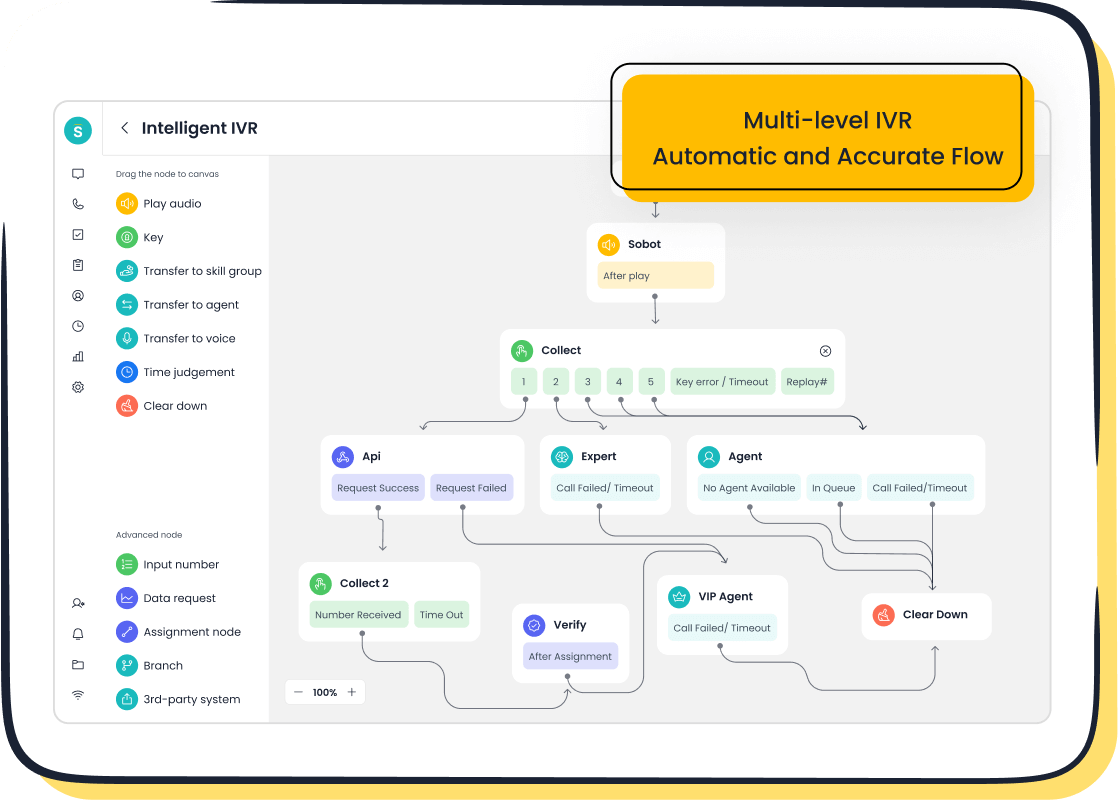Surprising examples of excellent customer service in healthcare today

Excellent customer service in healthcare means more than friendly greetings. It creates trust, helps patients feel heard, and leads to improved health outcomes. Patient experience shapes satisfaction and recovery. Recent studies show:
- Patient satisfaction improved from 2019 to 2021, especially in communication.
- Strong links exist between patient experience and improved health outcomes, such as shorter hospital stays and lower readmission rates.
- Health Information Management Systems boost satisfaction for inpatients.
Healthcare now uses digital tools to meet new expectations. The table below shows key trends:
| Trend | Description |
|---|---|
| Personalized Patient Experience | Data analytics tailor care and communication to each patient. |
| Omnichannel Patient Communication | Seamless contact across phone, chat, and apps for less frustration. |
| AI and Chatbots | Sobot AI and Sobot call center bring efficiency and support to patient care. |
Sobot brings these innovations to life. Real-world examples of excellent customer service in healthcare prove that small changes can transform patient experience and lead to improved health outcomes. Readers can find inspiration in these stories.
Healthcare Customer Service Defined

What Makes Service Excellent
Healthcare customer service stands out when it puts patients at the center of every interaction. Recent industry standards highlight several key actions that define excellence in this field:
- Staff develop strong knowledge of healthcare services to address patient concerns quickly.
- Teams adapt and stay resourceful to meet changing patient needs.
- Providers build lasting relationships by ensuring comfort, asking for feedback, and staying honest.
- Staff take ownership of patient issues and focus on solutions.
- Clear and empathetic communication, using simple language, helps patients understand their care.
- Professionals remain calm under pressure, even during difficult situations.
- Consistent follow-up ensures that patient issues are fully resolved.
Healthcare organizations also set high standards for doctors, staff, and the environment. Doctors listen carefully, explain information clearly, and treat patients as whole people. Hospitals create comfortable spaces, respond quickly to calls, and reduce waiting times. These actions help create a positive patient experience and build trust.
Note: The World Health Organization states that quality healthcare must be effective, safe, people-centered, timely, equitable, integrated, and efficient. These qualities guide organizations in delivering excellent healthcare customer service. Learn more.
Patient Experience Matters
Patient experience shapes how people feel about their care and can even affect their health outcomes. Studies show that when staff focus on communication, compassion, and respect, patient experience improves. Hospitals that reduce waiting times and manage pain well see higher satisfaction scores. For example, targeted improvements in compassionate care and waiting experience lead to better health results.
A positive patient experience links directly to better health outcomes. Evidence-based practices, such as clear communication and regular follow-ups, help reduce hospital stays and lower mortality rates. Healthcare leaders, clinicians, and educators play a key role in supporting these practices.
Many organizations use metrics like Customer Satisfaction (CSAT), Customer Effort Score (CES), and Net Promoter Score (NPS) to measure healthcare customer service. These tools help track progress and ensure that every patient receives high-quality care. The link between patient experience and compliance also shows that patients who feel heard and respected are more likely to follow medical advice, leading to better recovery and long-term health.
Key Elements of Exceptional Customer Service
Empathy and Personalization
Exceptional customer service in healthcare begins with empathy in every interaction. Healthcare professionals show understanding by recognizing patient emotions and responding with compassion. This approach improves diagnostic accuracy and patient satisfaction. Personalization means tailoring care to each patient’s needs and preferences. Providers use real-time data to adjust communication and treatment, which reduces frustration and improves outcomes. Sobot’s omnichannel solution helps healthcare teams deliver personalized messages and reminders, making every patient feel valued. AI-powered chatbots from Sobot can convey empathy and provide support at any time, enhancing the patient experience and building patient trust.
Empathy and personalization help patients feel heard and respected. These elements strengthen cooperation and lead to better health results.
Proactive Communication
Proactive communication is a key part of exceptional customer service. Healthcare teams reach out to patients before problems arise. They use plain language and active listening and communication to make sure patients understand their care. Sobot’s Voice/Call Center enables staff to send automated appointment reminders, follow-up messages, and wellness updates across voice, chat, and email. Intelligent call routing connects patients with the right professionals quickly. These tools reduce missed appointments and improve medication adherence. Proactive communication builds patient trust and keeps patients informed about their health.
Proven methods for proactive communication include:
- Using AI-powered platforms for targeted engagement.
- Employing multimodal channels for quick responses.
- Automating scheduling and reminders.
- Sending outbound campaigns for wellness updates.
Timeliness and Accessibility
Timeliness and accessibility are essential for exceptional customer service. Patients expect quick responses and easy access to care. Healthcare organizations use real-time data to schedule appointments and respond to requests within 48 hours. Sobot’s unified workspace and global call center features allow teams to manage calls efficiently and provide support anytime, anywhere. Mobile compatibility ensures patients can reach providers from any device. Timely care and accessible services improve satisfaction and health outcomes.
Studies show that timely access to care leads to higher patient satisfaction and better recovery rates.
Going Beyond Expectations
Healthcare providers go beyond expectations by showing empathy in every interaction and listening to patient concerns. Staff greet patients warmly and follow up on treatment progress. They validate feedback and make changes to improve care. Sobot’s technology supports these efforts by offering telemedicine, patient portals, and automated reminders. These tools help providers deliver personalized care and exceed patient expectations. Active listening and communication, combined with advanced technology, create a culture of exceptional customer service.
- Healthcare teams use technology to personalize care and keep promises.
- Providers act on feedback and communicate improvements transparently.
Examples of Excellent Customer Service in Healthcare
Acts of Kindness
Healthcare staff show acts of kindness every day. These actions create trust and comfort for patients. Many patients say that kindness matters more than wait time or cost. Hospitals that focus on kind care see higher patient satisfaction and better health outcomes.
- Staff who speak kindly lower patient anxiety and help patients feel safe.
- Kind communication leads to fewer complaints and better management of difficult news.
- Patients who receive kind care often stay loyal and recommend their providers.
- Organizations that train staff in compassion see improved teamwork and less burnout.
- A Johns Hopkins study found that just 40 seconds of kind reassurance can reduce patient anxiety.
- 87% of patients say kind care is more important than other factors.
- Hospitals with high scores in empathy and kindness also perform better financially.
Kindness in healthcare does not just make patients feel good. It leads to real improvements in health and satisfaction. Patients who feel cared for are more likely to follow treatment plans and recover faster.
Technology for Comfort
Modern technology helps healthcare providers deliver excellent customer service. Electronic Health Records (EHRs) keep patient information safe and easy to access. Telemedicine lets patients talk to doctors from home. Remote Patient Monitoring (RPM) helps patients follow their treatment plans and improves outcomes.
| Technology Type | Benefits | Example Uses |
|---|---|---|
| Telehealth | Convenience; reduces travel and wait times | Virtual consultations, follow-ups |
| Electronic Patient Portals | Empowers patients; improves communication | Access to health records, scheduling |
| Smart Room Technology & AI | Personalized comfort; operational efficiency | Adjusting room settings, feedback |
Patients feel more comfortable when they can reach their doctors easily. Telemedicine has a patient satisfaction rate of up to 78%. RPM helps more than 90% of patients stick to their treatment. Smart room technology lets patients control their environment, making hospital stays less stressful.
Healthcare teams use these tools to provide examples of excellent customer service in healthcare. Technology makes care safer, faster, and more personal. Patients can ask questions, get reminders, and see their health records anytime.

Sobot Voice/Call Center Impact
Agilent, a leader in life sciences and diagnostics, wanted to improve customer service for their patients and clients. They partnered with Sobot to upgrade their support system. Sobot’s omnichannel workbench and AI-powered chatbot helped Agilent answer questions quickly and accurately.
Agilent saw a sixfold increase in efficiency after using Sobot’s solution. Their costs dropped by 25%. The customer satisfaction score reached 95%. Sobot’s intelligent routing sent patients to the right experts. The AI chatbot handled routine questions, so human agents could focus on complex cases. Agilent’s staff spent less time switching between platforms because Sobot unified all channels.
Agilent’s story shows how technology can create examples of excellent customer service in healthcare. Sobot’s Voice/Call Center features, like smart call routing and unified workspace, help healthcare teams respond faster and more accurately. Patients get answers quickly, and staff can focus on what matters most.
Sobot’s solutions also support global healthcare providers. The system offers 99.99% uptime, mobile compatibility, and encrypted data transfer. Healthcare teams can manage calls, track data, and send reminders from anywhere. These features help providers deliver excellent customer service and improve patient satisfaction.
Seamless Coordination
Seamless coordination among healthcare teams leads to better patient outcomes. When doctors, nurses, and support staff work together, patients receive safer and more efficient care. Coordination reduces costs, lowers hospital readmissions, and improves quality scores.
| Aspect of Coordination | Evidence Supporting Improved Patient Outcomes |
|---|---|
| Reduced Healthcare Costs | 11% decrease in costs for chronic conditions |
| Lower Hospital Readmissions | Fewer readmissions with coordinated care |
| Improved Quality Scores | Higher HEDIS scores with better team coordination |
| Enhanced Chronic Disease Management | 56.2% of patients met diabetes goals, a 97.2% improvement |
| Decreased Patient Costs | Nearly 50% lower costs compared to fragmented care |
| Increased Patient Engagement | Patients more committed to treatment plans |
| Better Transitions of Care | 87% reduction in readmission odds with transitional care |
| Support for Value-Based Care | More collaboration and consistency |
Healthcare organizations use technology to support coordination. Sobot’s omnichannel solution gives teams a unified workspace. Staff can see patient data, track progress, and communicate easily. This helps teams share information and make better decisions. Patients benefit from smoother transitions and more consistent care.
Examples of excellent customer service in healthcare often include seamless coordination. When teams work together, patients feel supported and informed. They trust their providers and follow treatment plans. This leads to higher patient satisfaction and better health results.
Seamless coordination is not just about teamwork. It is about using the right tools and processes to make care safer and more effective. Healthcare providers who invest in coordination set new standards for excellent customer service.
Setting New Standards in Healthcare Customer Service
Lessons from Real-World Success
Healthcare organizations around the world have learned valuable lessons from real-world success stories. Companies that use AI-powered customer service tools see dramatic improvements. Klarna, for example, reduced resolution time by 82% and handled 65% of inquiries without human help. Bank of America’s Erica virtual assistant resolved 98% of requests on its own and processed over 2 billion interactions. These results show that automation and AI can make customer service faster, more accurate, and available in many languages. Patients benefit from quick answers and personalized support.
Sobot’s solutions help healthcare providers raise the bar. Intelligent chatbots assist patients with scheduling, answer common questions, and provide basic health information. This reduces the workload for staff and improves patient engagement. When a healthcare provider uses Sobot’s omnichannel platform, they can offer 24/7 support and seamless communication across phone, chat, and email. These tools help teams respond quickly and keep patients informed.
Real-world success shows that technology, empathy, and proactive communication set new standards for healthcare customer service.
Applying Best Practices
Healthcare providers can follow several steps to implement high standards.
- Teach and enforce customer service policies throughout the organization.
- Train staff to use support tools and technology, such as AI-powered help desks and patient portals.
- Set clear goals for service quality and measure progress regularly.
- Use scripts and talking points to ensure positive, consistent communication.
- Gather feedback from patients to identify areas for improvement.
- Offer self-service options like online scheduling and FAQs to empower patients.
A healthcare provider should also create a patient-centered environment. Hiring staff with strong communication skills and providing regular training helps maintain high standards. By using technology and focusing on empathy, healthcare teams can deliver excellent service every day.
Practical Steps for Excellent Customer Service
Staff Training
Healthcare organizations improve customer service by investing in staff training. Effective programs start with a training needs analysis to identify skill gaps. Teams use role-playing exercises to practice real-life patient interactions and build communication skills. Interactive workshops focus on empathy, active listening, and clear communication. Online modules help staff learn foundational skills at their own pace. Regular feedback sessions allow staff to reflect and reinforce positive behaviors. Sharing real patient stories builds understanding and trust. Technology, such as gamified modules and communication platforms, increases engagement and prepares staff for stressful scenarios. Sobot offers training resources and support tools that help healthcare teams deliver consistent, high-quality service.
Tip: Allocate enough time and resources for staff to fully engage with training. This investment leads to better patient satisfaction and a culture of continuous improvement.
Measuring Satisfaction
Measuring patient satisfaction helps healthcare providers understand what works and where to improve. Organizations use standardized questionnaires like PSQ-18 and CAHPS, which focus on communication, comfort, and coordination. Many also track metrics such as Net Promoter Score (NPS), appointment booking rates, and patient retention. Reliable tools ensure that feedback is valid and actionable. Sobot’s analytics platform helps teams collect and analyze patient feedback from multiple channels, making it easier to spot trends and address concerns. By measuring satisfaction regularly, providers can benchmark progress and set clear goals for enhancing patient satisfaction.
| Metric | What It Shows |
|---|---|
| Net Promoter Score (NPS) | Loyalty and likelihood to recommend |
| Appointment Booking Rate | Accessibility and ease of scheduling |
| Patient Retention Rate | Ongoing satisfaction and loyalty |
Continuous Improvement
Continuous improvement ensures that healthcare customer service keeps getting better. Teams use frameworks like Lean Six Sigma to identify problems, collect data, and set measurable goals. Staff develop and implement plans, monitor progress, and adjust based on results. Real-time feedback from patients helps teams respond quickly to issues and personalize care. Sobot’s analytics and feedback tools support this process by highlighting bottlenecks and tracking key performance indicators. When organizations act on feedback and communicate changes, they build trust and show commitment to enhancing patient satisfaction. This cycle of improvement leads to higher patient satisfaction and better health outcomes.
Excellent customer service in healthcare means more than medical care. It includes clear communication, quick responses, and respect for every patient. These actions build trust and improve health outcomes. Technology, like Sobot’s AI and the Agilent example, sets new standards by making care faster, safer, and more personal.
Patients and providers can expect better service. Providers should use digital tools, gather feedback, and follow up after visits. Patients can share their experiences and ask for clear information. Together, they help raise the bar for healthcare customer service.
FAQ
What does excellent customer service in healthcare mean?
Excellent customer service in healthcare means staff listen to patients, answer questions clearly, and provide fast help. Teams use technology like Sobot to make care easier and more personal. Patients feel respected and get better results.
How does Sobot improve customer service in healthcare?
Sobot helps healthcare teams respond quickly to patient needs. The platform uses AI chatbots, voice call centers, and omnichannel solutions. These tools make communication faster and more accurate. Patients get answers anytime, which improves satisfaction.
Why is empathy important in healthcare customer service?
Empathy helps staff understand patient feelings. When teams show empathy, patients feel safe and trust their providers. Empathy leads to better cooperation, higher satisfaction, and improved health outcomes. Excellent customer service in healthcare always includes empathy.
What role does technology play in excellent customer service in healthcare?
Technology makes customer service in healthcare faster and safer. Tools like Sobot’s unified workspace and AI-powered chatbots help teams manage calls, send reminders, and track patient data. Technology supports staff and helps patients get care when they need it.
How can healthcare providers measure customer service quality?
Healthcare providers use surveys, Net Promoter Score (NPS), and feedback forms to measure customer service in healthcare. Sobot’s analytics platform helps teams collect and review patient feedback. These tools show what works and where to improve.
See Also
How AI Is Transforming Customer Support Services Today
Understanding Medical Call Center Services And Their Advantages
The Leading Customer Service Software Solutions For 2024
Effective Strategies For Managing Call Center Quality Standards
